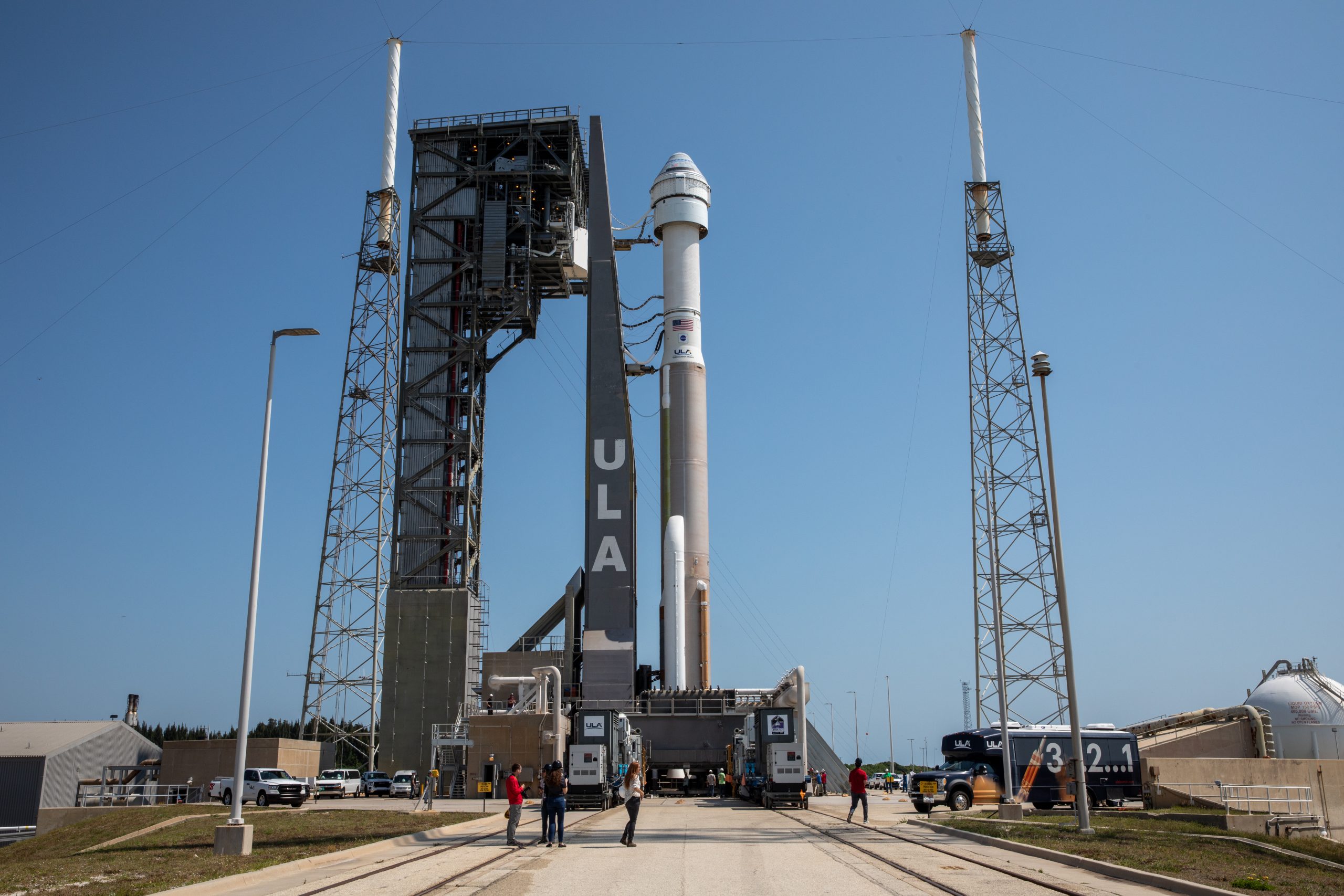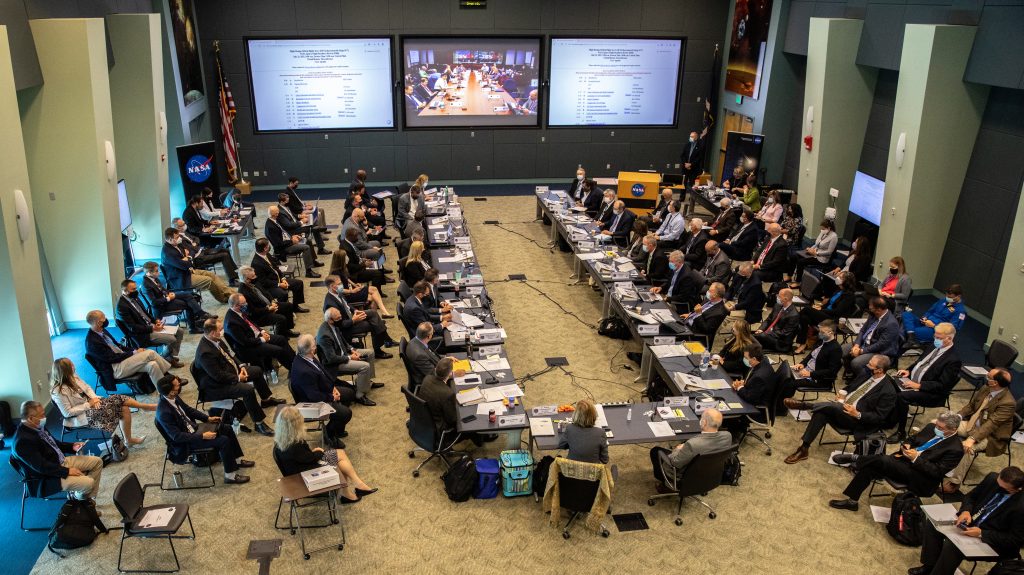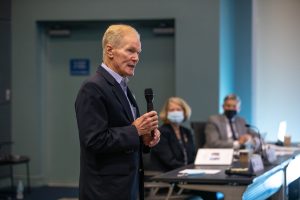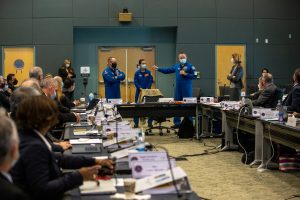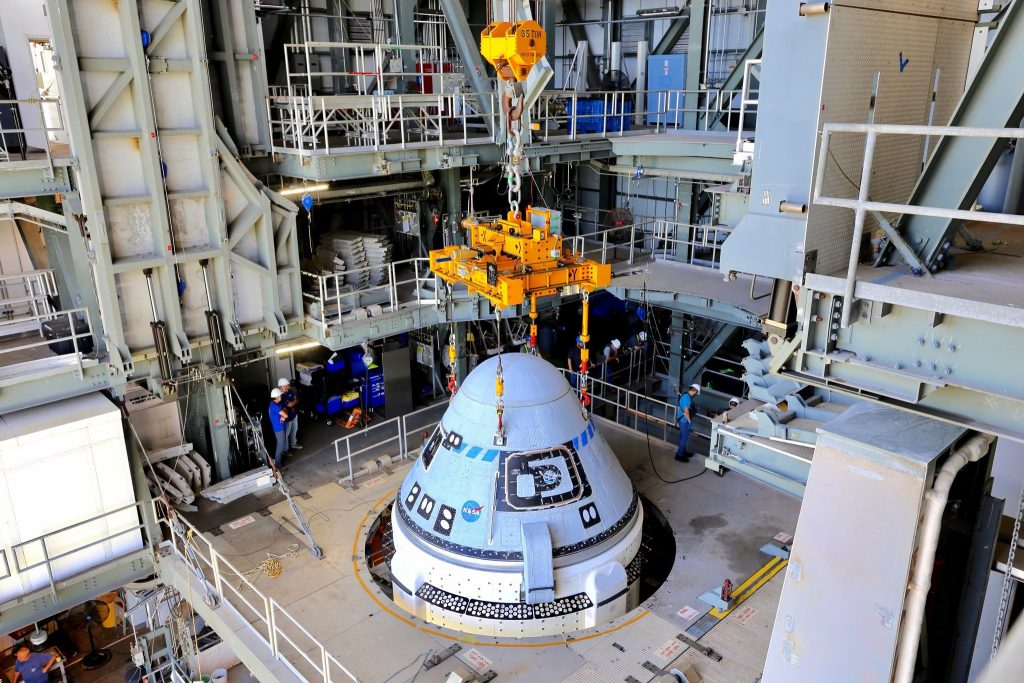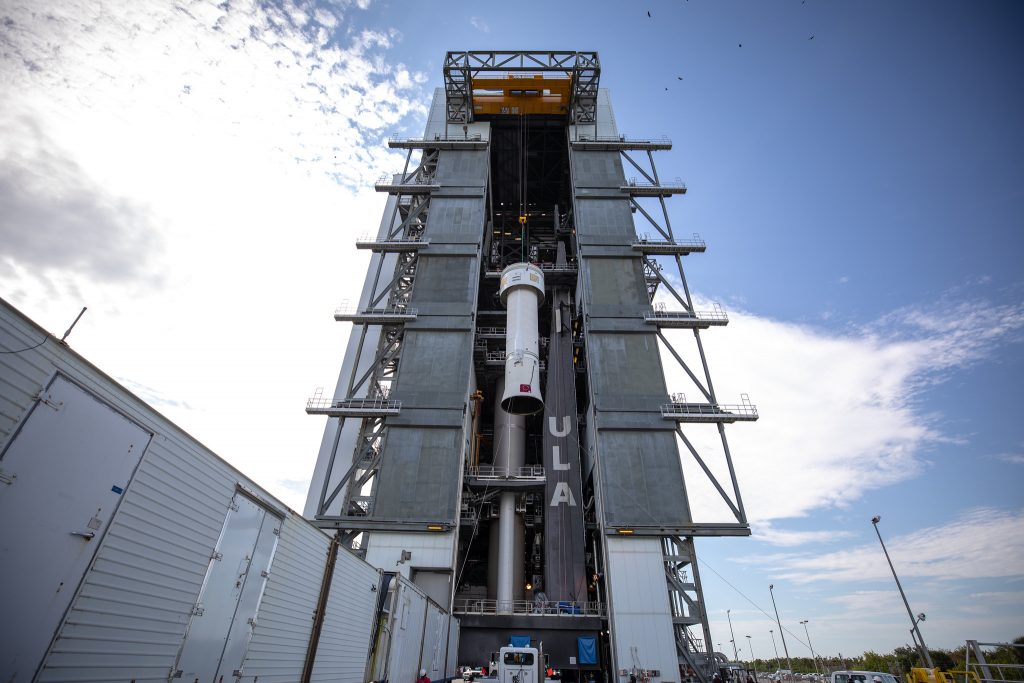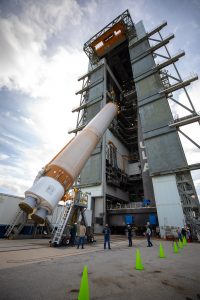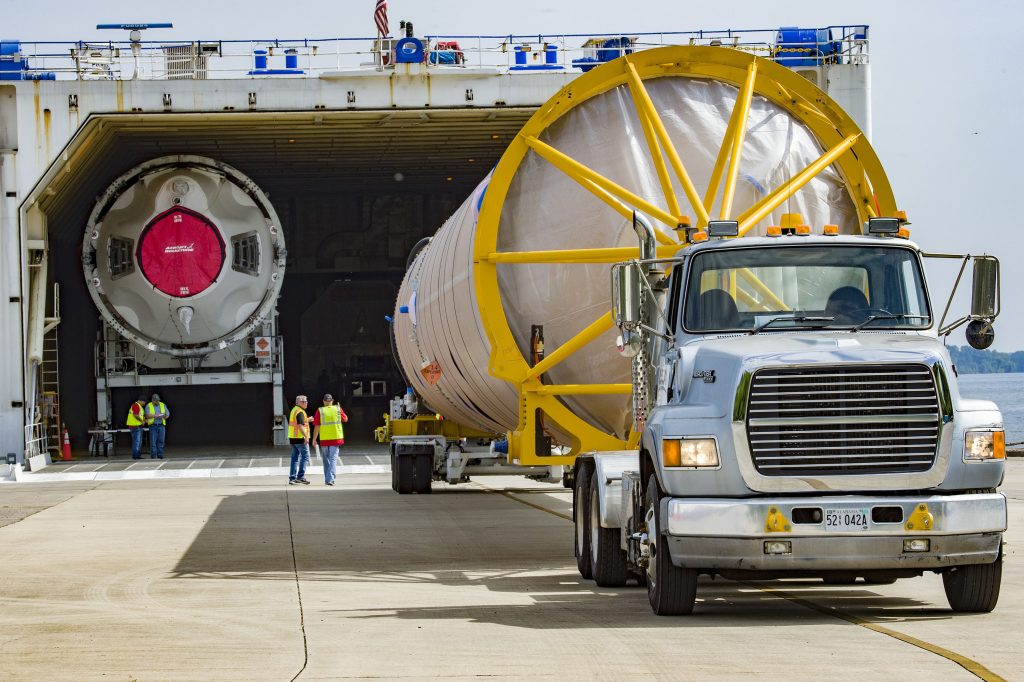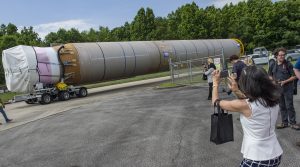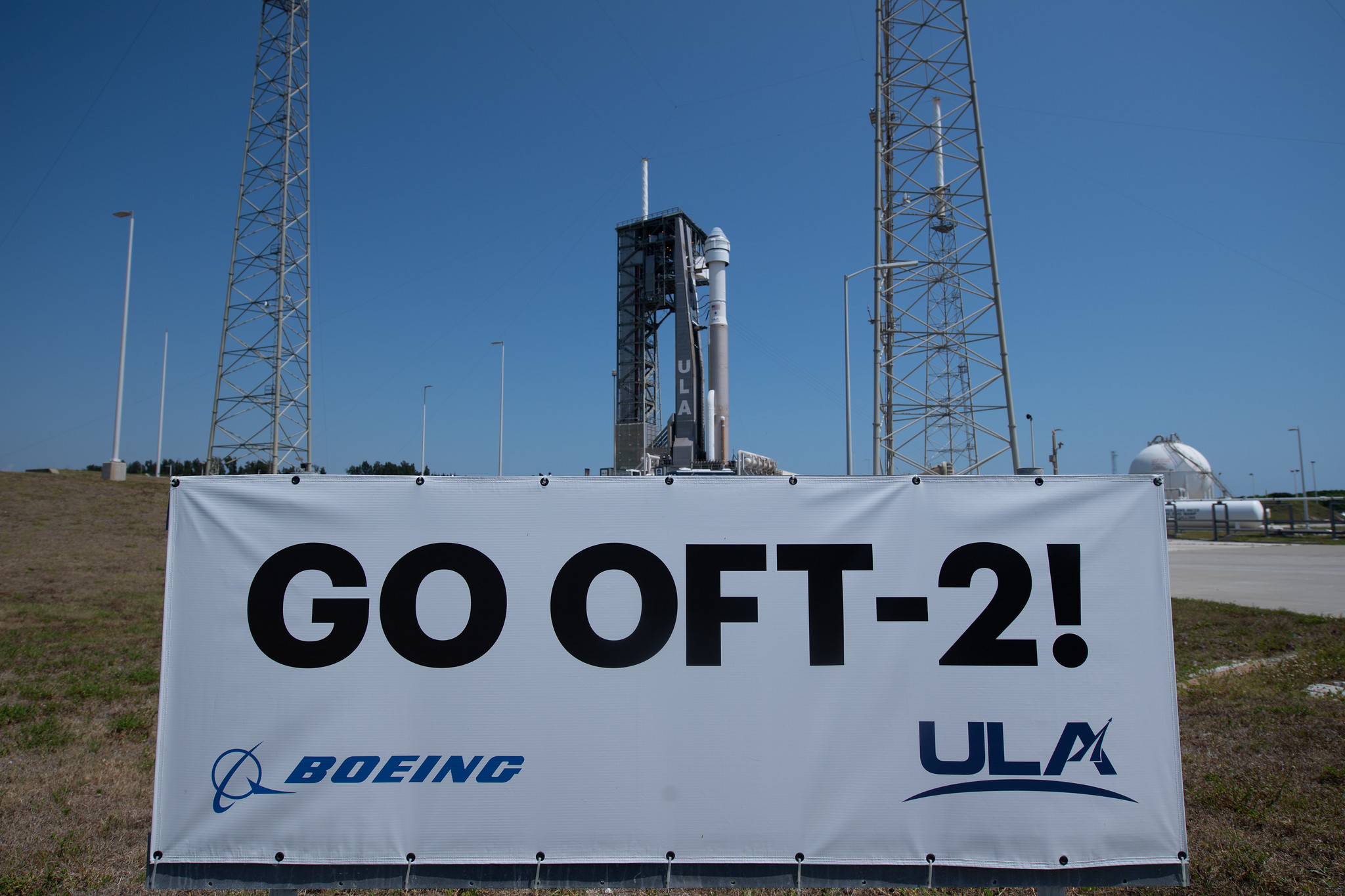
Good afternoon from Kennedy Space Center in Florida, and welcome to live launch coverage of NASA’s Boeing Orbital Flight Test-2 (OFT-2) to the International Space Station, launching in a little over an hour. Boeing’s CST-100 Starliner spacecraft sits atop a United Launch Alliance Atlas V rocket poised on the launch pad ready to go at nearby Space Launch Complex-41 on Cape Canaveral Space Force Station.
OFT-2 is an uncrewed flight test of the company’s Starliner spacecraft for NASA’s Commercial Crew Program. Liftoff is scheduled for 6:54 p.m. EDT during an instantaneous launch window.
The countdown is currently proceeding according to schedule. Fueling of the Atlas V rocket began a little after noon EDT today. The first stage booster’s RD-180 engine, containing two thrust chambers, was fueled with Rocket Propellant-1, a highly purified kerosene. The Centaur second stage was fueled with liquid hydrogen and liquid oxygen. Fueling of the rocket was completed about two hours later.
Stay with us here for coverage as the countdown continues towards launch. Watch the coverage live on NASA TV starting at 6 p.m. EDT. More details about the flight test and NASA’s Commercial Crew Program can be found in the online press kit and by following the @commercial_crew on Twitter and commercial crew on Facebook.
Meteorologists with the U.S. Air Force 45th Weather Squadron continue to predict an 80% chance of favorable weather for launch this afternoon. The primary concerns for launch day are the cumulus and anvil cloud rules violations during the instantaneous launch window.

